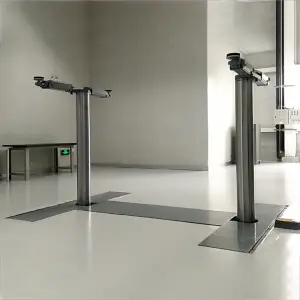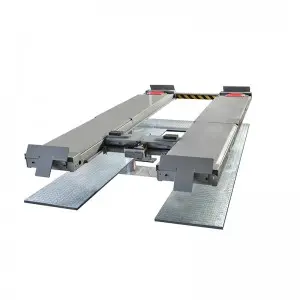When we think of cylinders, the first image that may come to mind is a simple geometric shape with straight sides and circular ends. However, the cylinder is a versatile shape that has found its way into various facets of modern design. From architecture to product design, the cylinder’s unique properties make it a popular choice for designers seeking a balance between form and function.

The Power of the Cylinder: A Versatile Shape in Modern Design

The Power of the Cylinder: A Versatile Shape in Modern Design
In architecture, cylinders can be seen in iconic buildings such as the Gherkin in London and the Torre Velasca in Milan. The cylindrical shape allows for efficient use of space while also creating a striking visual impact. The smooth, curved surface of a cylinder can help a building blend seamlessly into its surroundings or stand out as a bold statement piece. Additionally, the cylindrical shape offers structural advantages, distributing weight evenly and providing stability in the face of external forces like wind and earthquakes.

The Power of the Cylinder: A Versatile Shape in Modern Design
In product design, cylinders are often used for their ergonomic benefits. The cylindrical shape is easy to grip and comfortable to hold, making it ideal for everyday objects like pens, water bottles, and kitchen utensils. The rounded ends of a cylinder can also prevent sharp edges that could cause injury. When it comes to industrial design, cylinders are commonly used in machinery and equipment for their efficiency in moving and transporting materials. The rotational symmetry of a cylinder allows for easy assembly and disassembly, making maintenance and repairs a breeze.
One of the most iconic uses of the cylinder in modern design is in transportation. From cars to airplanes, cylinders are used in engines to convert fuel into motion. The combustion chambers in internal combustion engines are often shaped like cylinders, allowing for a more efficient and consistent burning of fuel. The cylindrical design also helps dissipate heat more effectively, keeping the engine running smoothly. In fact, the cylinder is such a fundamental shape in engine design that it has become synonymous with power and performance.
The cylinder is not just a practical shape; it can also be used to create stunning visual effects in art and design. Artists like Constantin Brancusi and Barbara Hepworth have used cylinders in their sculptures to explore concepts of balance, symmetry, and rhythm. The smooth, curved surfaces of a cylindrical form can evoke a sense of movement and flow, drawing the viewer’s eye around and through the piece. Whether made from marble, wood, or metal, cylinders add a sculptural element that is both timeless and modern.
In the world of technology, cylinders play a crucial role in storage and data processing. Hard disk drives and flash drives use cylindrical platters to store and retrieve information. The cylindrical shape allows for efficient packing of data storage units, maximizing capacity while minimizing wasted space. In computer graphics, cylinders are used to create 3D models of objects with curved surfaces, adding realism and depth to virtual environments. The versatility of the cylinder in technology reflects its adaptability and efficiency in a fast-paced digital world.
In conclusion, the cylinder is a shape that has stood the test of time and continues to be a staple in modern design. Its versatility, efficiency, and aesthetic appeal make it a popular choice for architects, product designers, artists, engineers, and technologists alike. Whether used in architecture, product design, transportation, art, or technology, the cylinder offers endless possibilities for creative expression and innovative solutions. Its timeless elegance and practicality ensure that the cylinder will remain a key element in the designer’s toolbox for years to come.Cylinder


